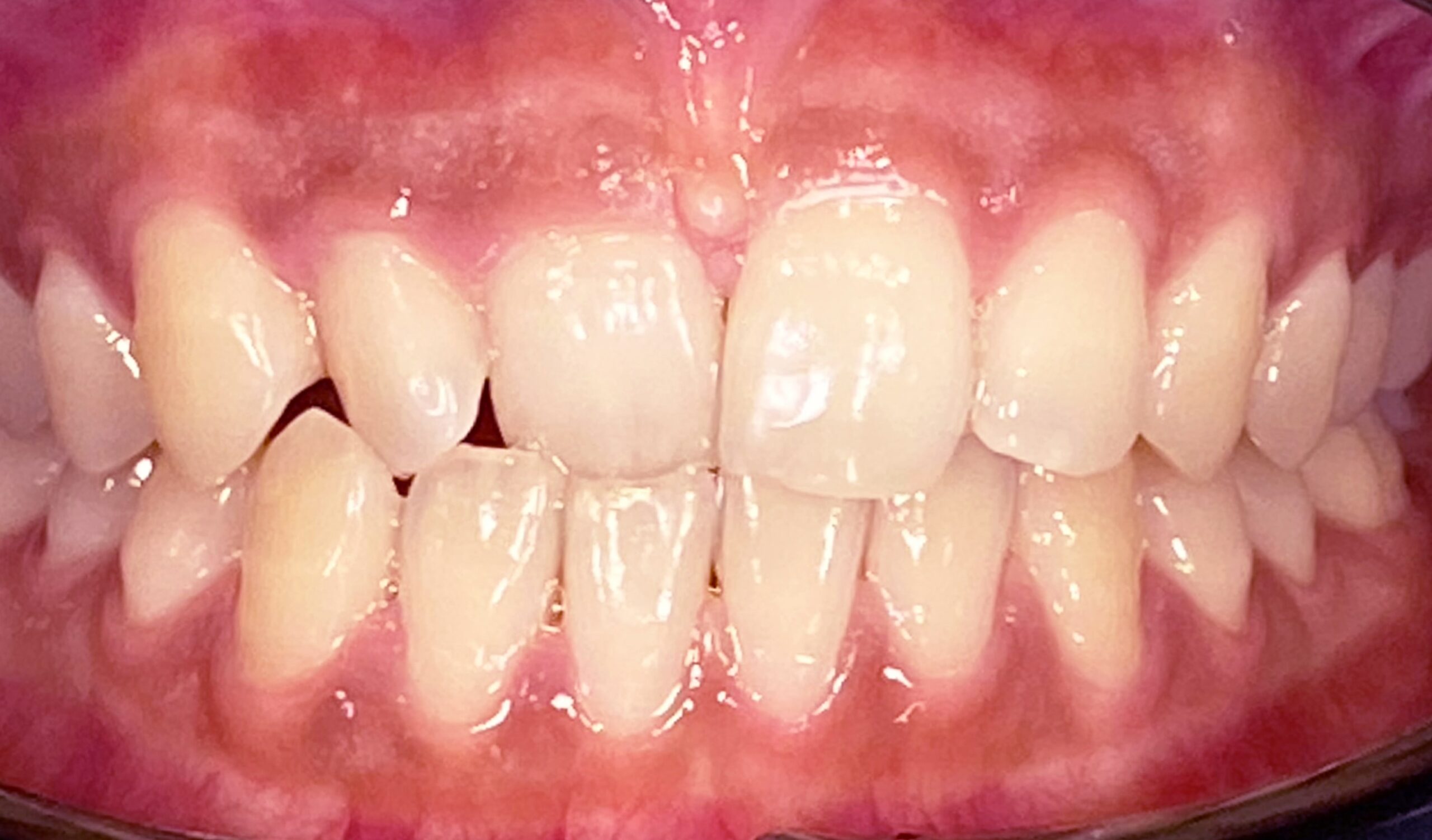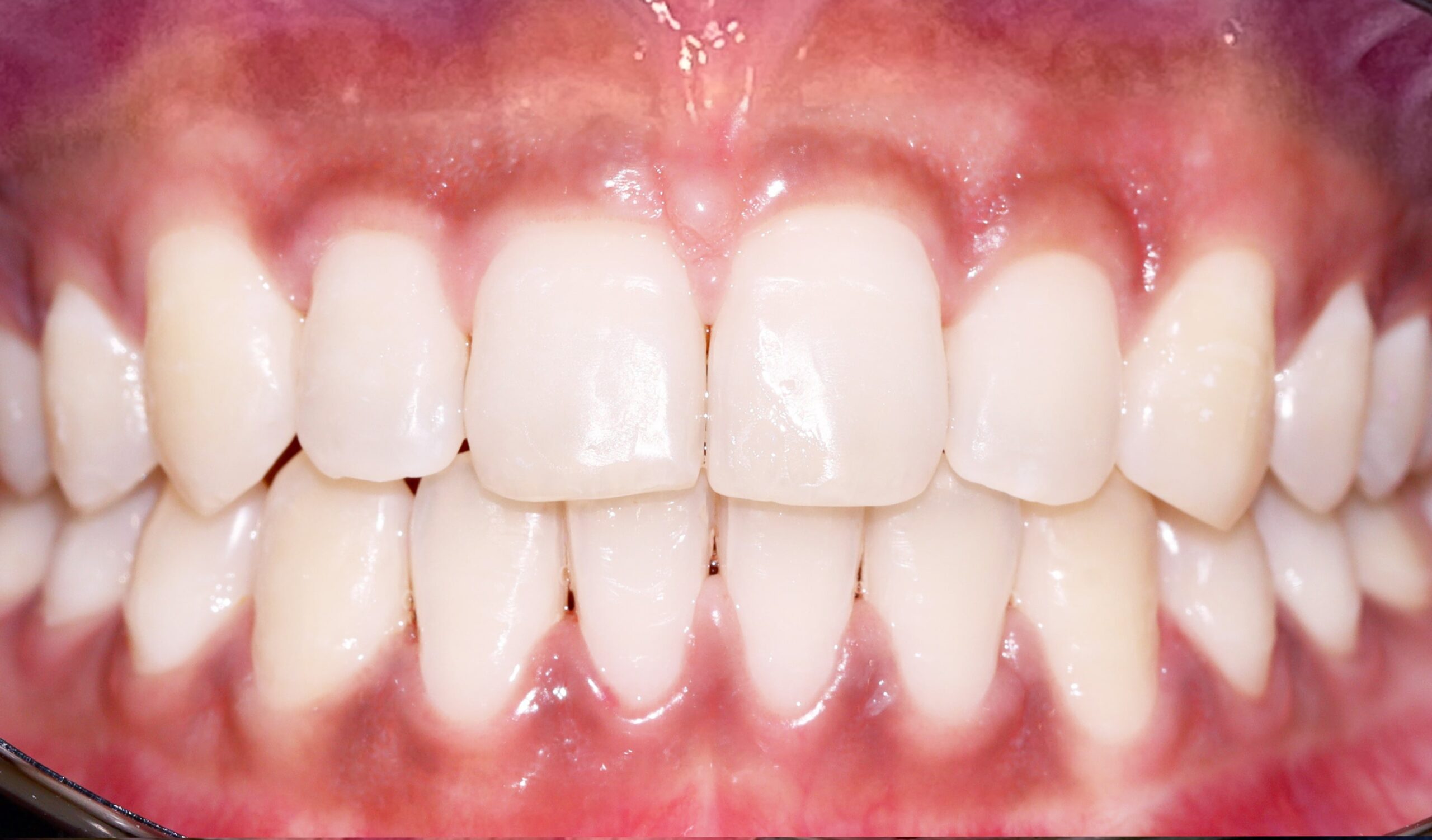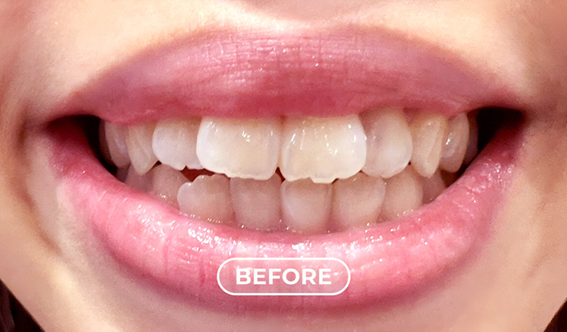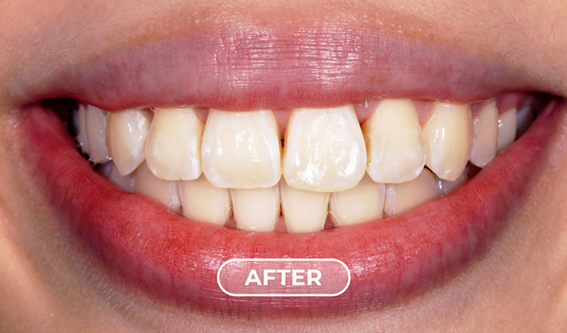What Are Braces?
Dental braces is a type of orthodontic treatment used to straighten the teeth to improve their look and function! This treatment helps improve alignment, provide bite correction, close gaps between teeth, midline correction, and enhance the teeth’s arch form.
*Overcrowding and Bite Problem
*Gaps
*Bite Problem
How Long Does The Treatment Take?
The duration of this treatment may last up to 2 years, depending on a few factors such as the complexity of the case, the anatomy and physiology of the patient’s oral cavity, as well as the compliance of the patient to the monthly adjustments.
Do You Need Braces?
Your dentist will usually recommend getting braces if you have the following:
- Teeth that are visibly crooked or crowded
- Not enough or too much spacing between your teeth
- Difficulty with flossing in between and brushing around crooked teeth
- Flaring of the upper front teeth
- Severe overbite, such that the lower front teeth are too far behind your upper front teeth
- With underbite and/or crossbite, wherein the lower front teeth are positioned in front of your upper front teeth
- Jaws that click when you chew
If left untreated, these problems can result in an unhealthy smile, tooth decay, gum disease, speech difficulties, as well as problems with biting or chewing.

What Are the Different Types of Braces?
Braces generally come in three varieties:
Traditional Braces, SWLF Braces, and Damon Self-Ligating Braces.
Traditional Metal Braces
Traditional braces are the type of braces we commonly see. It is made from high-grade stainless steel metal brackets that are attached to each tooth using a type of dental cement.
The brackets are linked to each other with an archwire, which puts slight pressure on the teeth causing them to move slowly into the correct position. The arch wires are connected to the brackets using tiny rubber elastics known as ligaties or o-rings, which your dentist will change with every adjustment.
Straight Wire Low Friction (SWLF) Braces
Straight Wire Low Friction (SWLF) Braces are composed of a combination of Synergy brackets and new Super-elastic wires, which allows for light, continuous forces over longer periods, with superb individual and selective control. Plus, the number of wires used in the treatment has been drastically reduced as compared to traditional braces, making the treatment 30% faster!
Self-Ligating Braces (Damon Braces)
Self-ligating braces, also known as Damon braces, are a modern and innovative type of dental braces that eliminates the need for using elastic ligaties to hold the brackets in place, allowing the teeth to move at a gradual and natural pace. This type of dental braces has become popular with dentists and patients because of its ability to deliver fast, effective, and reliable results! Self-ligating braces have a sliding mechanism that allows for less friction and less pressure, which provide gentler forces to move the teeth with less discomfort. In addition, this type of dental braces also makes it easier for patients to clean their teeth as compared to traditional braces.
What Is the Treatment Process for Braces?
Getting dental braces is a straightforward process! It all starts with a simple appointment for an orthodontic check-up and diagnostic records followed by an in-depth discussion of the patient’s case, installation of the braces, and a series of adjustments to achieve a healthier smile!
1. Appointment for Orthodontic Check-Up and Diagnostic Records
The first step to getting braces is to book an appointment for orthodontic records. These records are a vitally important part of the treatment process as they will provide the orthodontist with clear information about the patient to make an accurate diagnosis and develop an appropriate treatment plan for them.
To have an orthodontic record, a patient would have to go through the following procedures:
- History Taking
- Clinical Examination
- Diagnostic Photos
- Radiographs
- Panoramic X-Ray – fully visualize the entire upper and lower teeth and jaws. This gives information about jawbone, roots, and jaw joint as well as evaluating for presence of extra teeth, impacted teeth or missing teeth.
- Cephalometric X-Ray – it provides important information regarding the skeletal profile and the position of the jaws and teeth. It also provides a baseline starting point to monitor growth in younger patients.
- Model Casts of the Teeth
2. Discussion of the Current Oral Condition
During this point of the process, the dentist provides an in-depth discussion of the present condition of the patient’s teeth as well as the treatment plan and objectives that were developed for the patient. This is also when the cost of the procedure is presented to the patient.
3. Installation of Braces
The installation process starts with teeth cleaning. Afterward, a cheek retractor is used to retract the cheeks and lips, making it easier to visualize the patient’s teeth. The bonding cement is then placed on the back sides of the brackets and then placed at a very precise position on the teeth.
After placing the brackets, a laser light machine is used to harden and cure the cement. The entire installation procedure can range between 1 hour to 2 hours.
4. Adjustment of Braces
The adjustment of dental braces is a monthly procedure that allows the dentist to evaluate the patient’s tooth movement and provide the necessary recommendations to move forward with the treatment.
A normal adjustment appointment may include the following:
- Removal of the colored rubber ligaties, or opening of the bracket that holds the archwire.
- Removal of the wires on the brackets
- A check-up on the current progress of the tooth movement
- Application of new archwires depending on the progress and recommendation of the dentist
- Placement of new colored rubber ligaties, or closing of the brackets
Since the changes in tooth movement require a minimum of 3 weeks to take effect, most adjustment appointments are made in the 3 to 8-week range.
It is not unusual for a patient to feel discomfort during and immediately after the adjustment. The discomfort and soreness are usually a result of tooth movement due to the recent change of archwire or adjustments in the archwire.
The recommendations for managing the discomfort are the same as when braces were first applied. Typically, the pain usually subsides over the next 3 to 5 days after the adjustment.
5. Removal of Braces
The process of removing braces and the adhesive is relatively painless. However, it is possible to feel discomfort since some of the teeth, especially the lower front teeth, may still be sensitive to pressure.
After the braces have been removed, the adhesive remaining on the teeth must also be removed. This is usually done with a slow or high-speed dental handpiece.
6. Placement of retainers
The dentists will recommend the best type of retainer for the patient from the following types of retainers:
- Removable Hawley or Begg Wrap-around wire retainers
- Removable Clear Plastic retainers
- Bonded Fixed Lingual retainers









